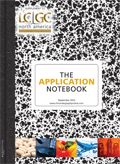Fast GC–MS-MS Analysis of Multicomponent Pesticide Residues (360) in Food Matrix
This study illustrates the successful combination of fast GC and tandem mass spectrometry to determine 360 pesticides spiked in a QuEChERS apple extract.
This study illustrates the successful combination of fast GC and tandem mass spectrometry to determine 360 pesticides spiked in a QuEChERS apple extract.
To handle the high number of monitored pesticides, a quick, easy, and cheap cleanup procedure called QuEChERS was used (1). Although the QuEChERS technique has significant advantages, samples prepared by this method still contain matrix interferences that can complicate accurate pesticide quantification.
Tandem MS instruments using multiple reaction monitoring (MRM) mode have become the analytical technique of choice for analysis of pesticides in food matrices, as they provide increased sensitivity and selectivity by virtually eliminating the background matrix interference. The following presents an example of analyzing 360 pesticides spiked in apple extract.
Experimental
The apple sample matrix was extracted and subjected to cleanup using the QuEChERS procedure. A 6-point calibration curve (0.5 ppb to 100 ppb) was created by spiking the blank sample matrix. The spiking solution contained 360 different pesticides, and used TPP as internal standard.
A Shimadzu GCMS-TQ8040 equipped with a GL Science Optic-4 multi-mode inlet and an AOC-5000 Plus was used for sample measurement. Method MRMs and collision energies (CE) were taken from Shimadzu's Smart Pesticide Database. All compounds were measured with one quantifier and one qualifier MRM transition.
Results
Figure 1 shows the full chromatogram of the 360 pesticides; all compounds elute in less than 10 min. Significant co-elution of pesticides within the analysis time is evident.

Figure 1: MRM chromatogram of 360 pesticides in apple matrix.
Matrix-matched calibration curves (0.5–100 ppb) were created for all 360 pesticides. The linear correlation factor was 0.998 or better for all compounds. Most components were detected at the lowest concentration of 0.5 ppb.
To assure repeatability, at least 10 data points per peak are required (2). To enable this number of data points, a loop time of 0.18 s was chosen. The shortest dwell time per MRM was 3 ms. At this short dwell time, instrument precision and speed become very important to obtain good repeatability for all measured transitions, as illustrated in Figure 2.

Figure 2: Overlaid MRM chromatograms of five replicate peaks (unsmoothed) for three compounds measured with 3 ms dwell time.
Conclusion
This study illustrates the successful combination of fast GC and tandem mass spectrometry. It was possible to determine 360 pesticides spiked in a QuEChERS apple extract with excellent calibration curve linearity and good repeatability in less than 10 min.
References
(1) QuEChERS, European Standard, EN 15662,
(2) K. Mastovska and S.J. Lehotay, J. Chromatogr. A 1000, 153–180 (2003).

Shimadzu Scientific, Inc.
7102 Riverwood Drive, Columbia, MD 21046
tel. (800) 477-1227
Website: www.ssi.shimadzu.com

New Study Reviews Chromatography Methods for Flavonoid Analysis
April 21st 2025Flavonoids are widely used metabolites that carry out various functions in different industries, such as food and cosmetics. Detecting, separating, and quantifying them in fruit species can be a complicated process.
Analytical Challenges in Measuring Migration from Food Contact Materials
November 2nd 2015Food contact materials contain low molecular weight additives and processing aids which can migrate into foods leading to trace levels of contamination. Food safety is ensured through regulations, comprising compositional controls and migration limits, which present a significant analytical challenge to the food industry to ensure compliance and demonstrate due diligence. Of the various analytical approaches, LC-MS/MS has proved to be an essential tool in monitoring migration of target compounds into foods, and more sophisticated approaches such as LC-high resolution MS (Orbitrap) are being increasingly used for untargeted analysis to monitor non-intentionally added substances. This podcast will provide an overview to this area, illustrated with various applications showing current approaches being employed.

.png&w=3840&q=75)

.png&w=3840&q=75)



.png&w=3840&q=75)



.png&w=3840&q=75)
















